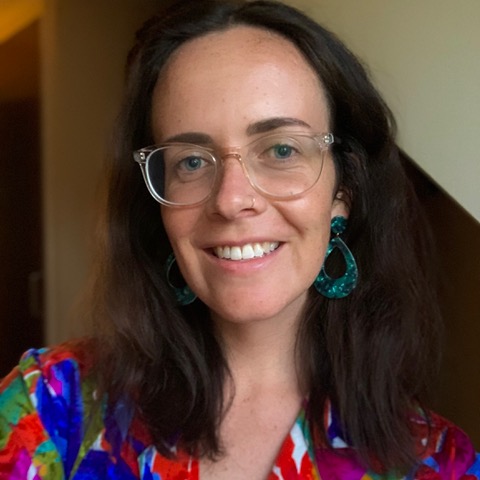Tidligere arrangementer - Side 52
C*-algebra seminar talk by Alistair Miller (Queen Mary University of London)
NCMM Associate Investigator Professor Christine Hanssen Rinaldo, Department of Clinical Medicine, University of Troms? and University Hospital North Norway, will present her research as part of the NCMM Tuesday Seminar Series.
By Quentin Mauvisseau from the Natural History Museum, University of Oslo
Abstract: Dynamic Contact Lines are moving lines at which two fluids (eg air and water) and a solid meet. They offer longstanding paradoxes in the theory of continuum mechanics. I describe some aspects of their computation: a curtain-coating numerical experiment, a withdrawing plate, and a droplet between parallel plates. All computations are done using Volume-Of-Fluid methods on octree grids, and comparisons with phase field and molecular dynamics approaches performed in collaboration with KTH, Stockholm.
Hybrid format via Zoom possible on demand (contact timokoch at uio.no)
Marianne Dahl, senior researcher at The Peace Research Institute Oslo (PRIO)
I anledning CHARMs 10-?rsjubileum inviterer CHARM til seminar om rehabiliteringstjenester etter Covid-pandemien – hvor g?r vi?
The Section 4 seminar for the Spring of 2022 will be held on Tuesdays from 10:15–12:00 (see the schedule)
P? f?rste seminar i Partnerforums seminarserie om samordning sp?r vi: Hva kjennetegner samordningsutfordringene i statsforvaltningen?
NCMM Associate Investigator Ole Andreassen, Professor at the Division of Mental Health and Addiction, Oslo University Hospital and the Institute of Clinical Medicine, University of Oslo, will present his research as part of the NCMM Tuesday Seminar Series.
C*-algebra seminar talk by Judy Packer (University of Colorado Boulder)
C*-algebra seminar talk by Roberto Conti (Sapienza University of Rome)
C*-algebra seminar / Gemini Center seminar talk by Paula Belzig (University of Copenhagen)
Abstract: I present the electrophoretic transport phenomenon of spherical soft particles. Electrophoresis is one of the important electrokinetic techniques, which is often used to characterize, and separation of colloids. It is commonly used as a separation technique and often used in the separation of DNA, protein molecules, serum to identify paraproteins, etc. Electrophoretic transport phenomenon is also used to understand the electric properties of several bioparticles including virus, bacteria, humic cells and macromolecules and may be used to understand the transport of cargo vessel in treatments of various diseases, e.g., cancer, inflammation, multiple myeloma, rental pathological disorders and macroglobulinemia, etc. Thus, the proper understanding of the electrophoretic transport of soft particles is important to understand the characteristics features of various bio-colloids and macromolecules, which can be viewed as soft particles. In this talk, I will present some of the existing simplified models for electrophoretic transport of soft particles. In addition, I have further extended it for the real situation, considering the effect of pH-dependent charge densities of the inner core and peripheral soft polymeric layer, effect of hydrodynamic slip length of the hydrophobic core surface, etc.
Hybrid format via Zoom possible on demand (contact timokoch at uio.no)
Max Gr?nke, Max Planck Institute for Astrophysics, Garching (Germany).
I present a simple, efficient, three dimensional, time dependent model for bone regeneration in the presence of porous scaffolds to bridge critical size bone defects. The essential processes are an interplay between the mechanical and biological environment which we model by a coupled system of PDEs and ODEs. The mechanical environment is represented by a linear elastic equation and the biological environment through reaction-diffusion equations as well as as logistic ODEs, modelling signalling molecules and cells/bone respectively. Material properties are incorporated using homogenized quantities not resolving any scaffold microstructure. This makes the model efficient in computations, thus suitable as a forward equation in optimization algorithms and opening up the possibility of patient specific scaffold design and this model is used as a PDE constraint for the optimization of polymer scaffold porosities. Our numerical findings show that our model for example recovers and quantifies clinically relevant stress shielding effects that appear in vivo due to external fixation of the scaffold at the defect site.
This talk is part of the Mechanics Lunch Seminar series. Bring-your-own-lunch and lots of questions.
Hayley Macpherson, Centre for Theoretical Cosmology in DAMTP, University of Cambridge (UK)
Prof. Fernando Alvarez
Emeritus Arnt Inge Vistnes, Fysisk institutt, UiO.
Vegard Skirbekk, senior researcher at the Norwegian Institute of Public Health (FHI).







.png?alt=listing)


